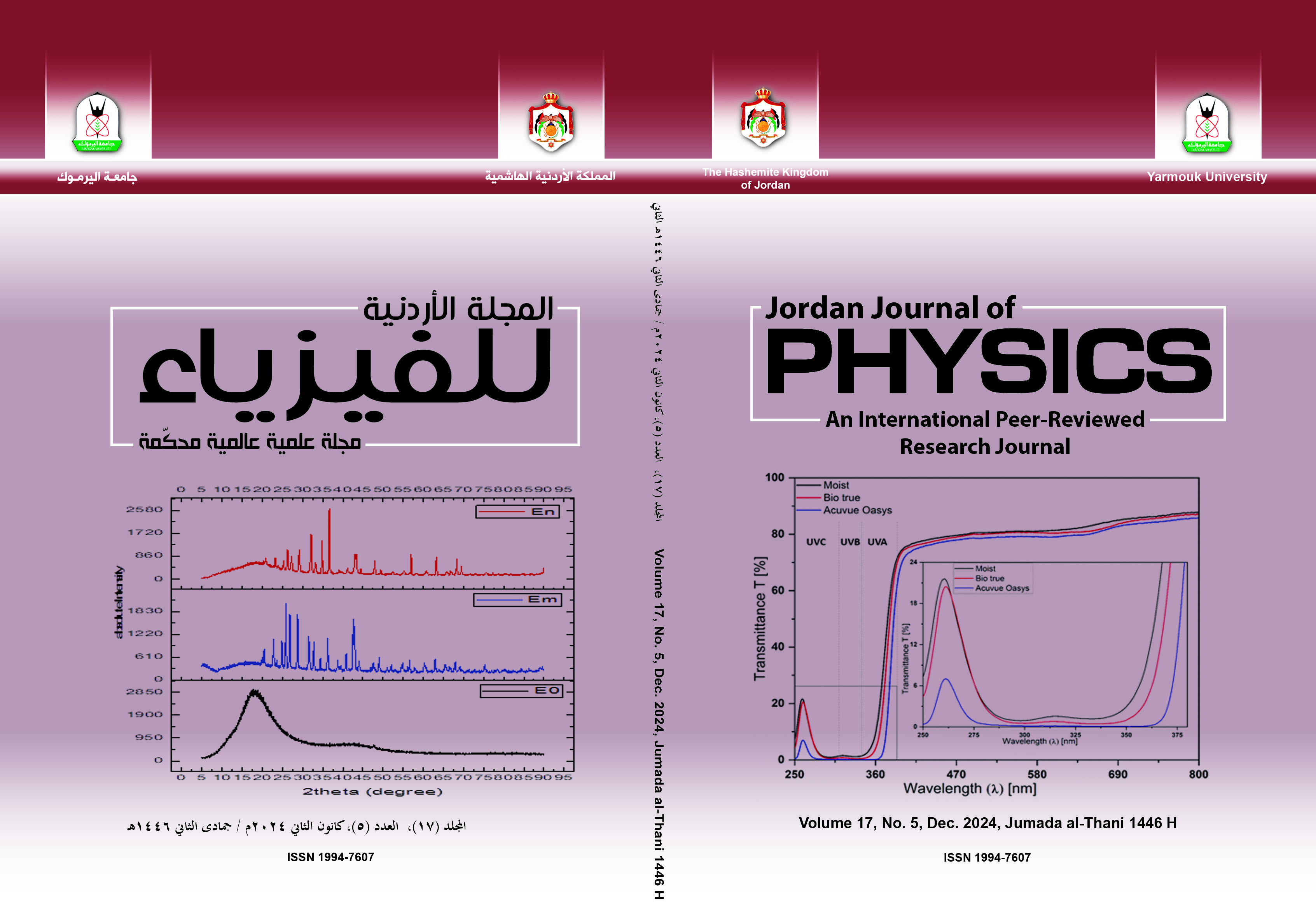Retrieval of Optical Constants of Undoped Flash-Evaporated Lead Iodide Films from an Analysis of Their Normal Incidence Transmission Spectra Using Swanepoel’s Transmission Envelope Theory of Non-Uniform Films
Abstract
Normal-incidence transmission-wavelength (Texp (λ)-λ) spectra of 1 and 1.2 mm thick flash-evaporated lead iodide (PbI2) films on 1.1 mm thick glass slides held at 2000C display well-spaced several interference-fringe maxima and minima in the λ-range 520-900 nm, without exhibiting a transparent region and with the maxima lying well below the substrate transmission. Below 520 nm, these (Texp (λ)-λ) curves drop steeply to zero (at λ ≼ 505 nm), signifying crystalline-like PbI2 film absorption. As corrections of measured (PbI2 film/substrate) transmittance data for substrate absorption and spectrometer slit-width effect were marginal over the studied λ-range, the observed low transmittance of (PbI2 film/substrate) system was related to PbI2 film thickness non-uniformity (∆d), which causes shrinkage of both maxima and minima and leads to significant film optical absorption that reduces both maxima and minima. The McClain ENVELOPE algorithm was utilized, with a minor modification, to construct maxima TM (λ_max/λ_min) and minima Tm (λ_max/λ_min) envelope curves, which were analyzed by Swanepoel’s envelope method of non-uniform films using an approach that takes account of dispersive substrate refractive index ns (λ) and circumvents the non-availability of a high-λ transparency region. In such analytical approach, (∆d) was varied till a re-generated (Tgen (λ)-λ) curve matches the (Texp (λ)-λ) curve. An average thickness d- of the film, besides its refractive index n(λ) and absorption coefficient α(λ) in the weak, medium and strong absorption regions, were then obtained. The energy-dependence of is discussed in view of interband electronic transition models. The obtained results are consistent with other literature studies on similar flash-evaporated PbI2 films.
Keywords: PbI2, Optical constants and bandgap, Swanepoel's transmission envelope method, Non-uniform films.


